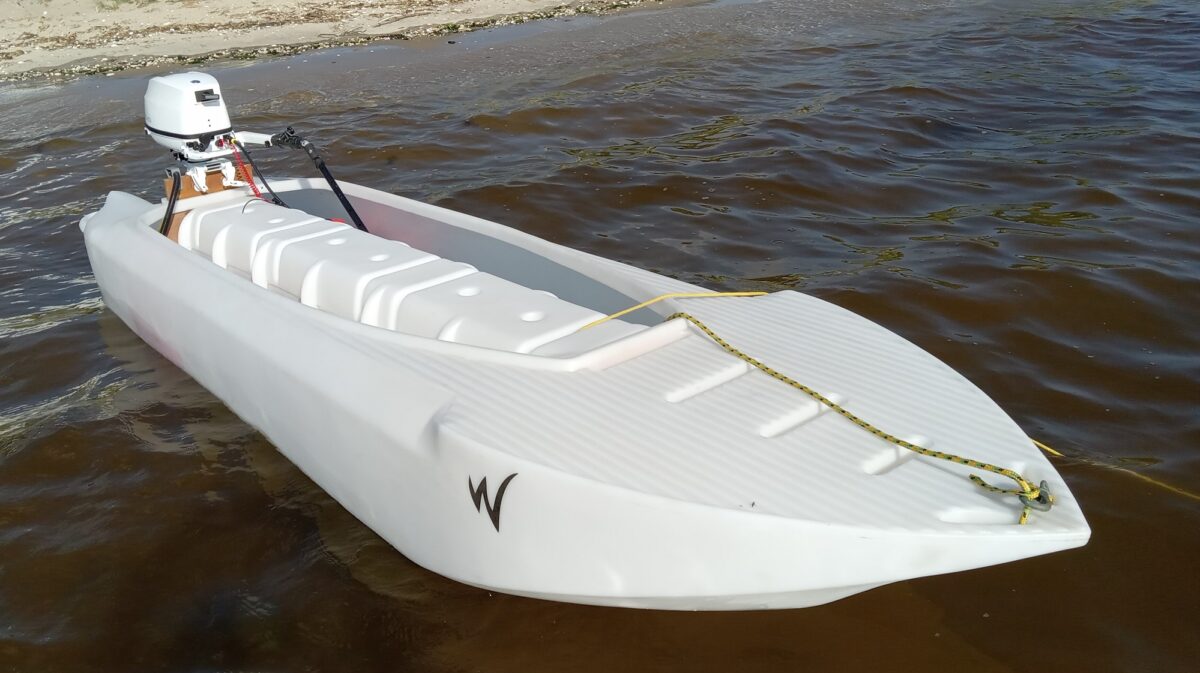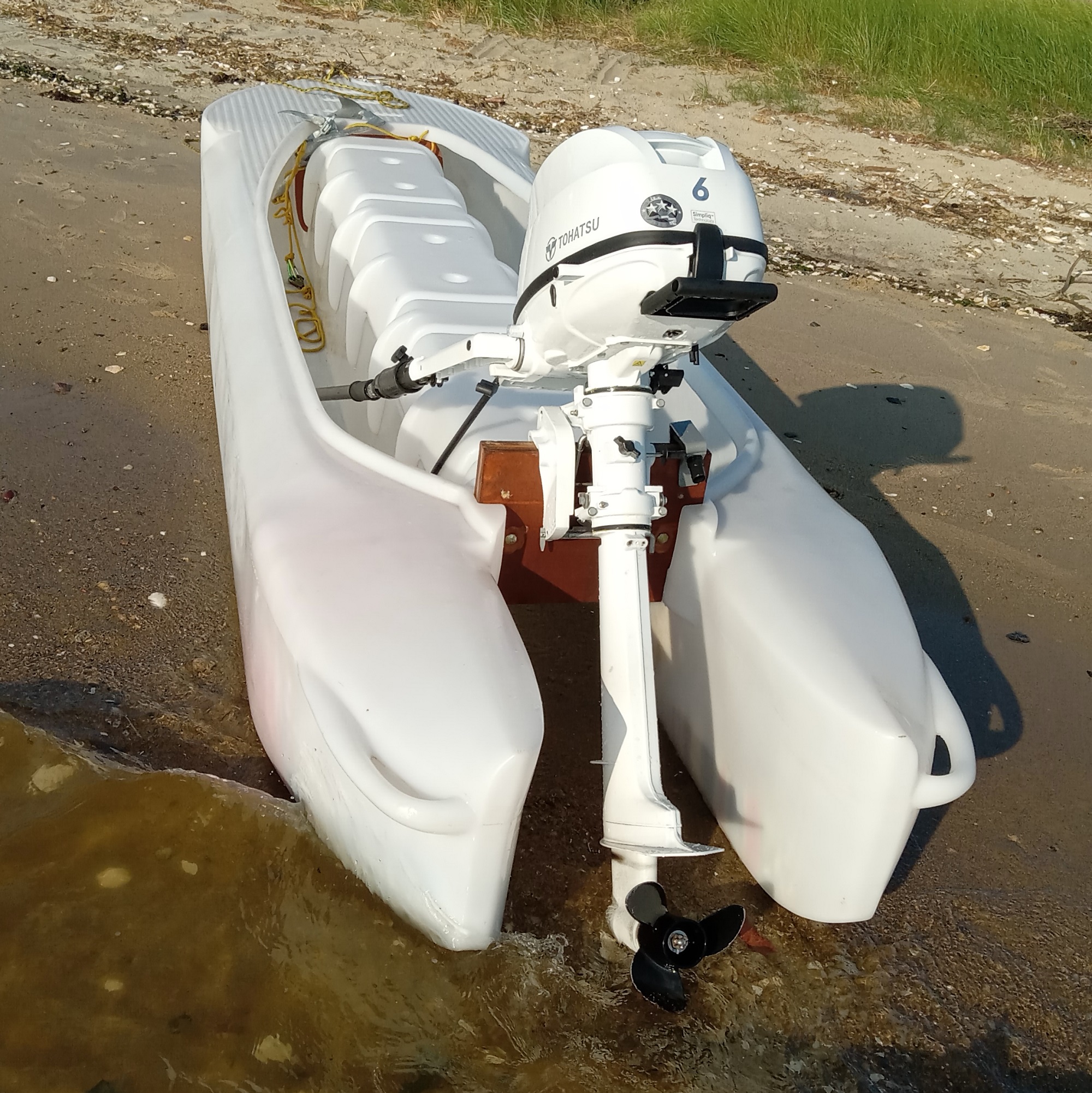This article discusses factors that should be taken into account in the design and reinforcement of a boat’s transom, and by boat we mean any motorized small vessel, including microskiffs, motorized kayaks, and canoes.
The Outboard Motor Effect on a Boat’s Transom
An outboard motor is attached to the top part of the transom (or vertical mounting plate) by means of two screws. The lower part of the motor’s mounting bracket is pressed against the back side on the transom.
The motor’s propeller rotates at the bottom of a long shaft that can act on the transom as a lever, namely apply torsional forces on it (Torque), both vertically and horizontally, depending on the relative position of the hull and the direction in which the propeller is pushing –
- Horizontally, when making a sharp turn or bumping against a wave hitting the hull on its side, and
- Vertically, when a climbing up a big wave or coming down on the other side.
The following examples may clarify this –
1. A boat that makes a sharp turn
When a boat makes a sharp right turn, the propeller rotates the transom clockwise, while the water resisting the right motion of the hull applies a torsional force on the transom in the opposite direction, namely counter-clockwise.
2. A boat’s bow “dropping” on the back side of a big wave, or wake
In this case there is a sudden change, and there is no water to resist the hull’s forward motion and push its bow upward, so the bow drops abruptly. The result is a sharp change in the hull’s angle, with the bow now pointing downward and the stern being higher than the bow. In such case, the dropping bow pulls the transom’s top forward, generating considerable stress.
In both these cases, the torsional forces and the resisting forces create stress in the boat’s transom. The stronger the motor, the faster the boat goes, and the bigger and more sudden the change, the more stress.
If the transom and motor mount are not properly designed and built, this could lead to a structural failure in either, and to serious trouble.
Danger to the transom during transportation
The boat’s transom is exposed to powerful torsional forces even when it is not in use, particularly during transportation, be it on a trailer or a pickup truck bed.
In these conditions, the heavy motor hangs outside the boat from its transom, and it can be exposed to severe shocks when the transporting vehicle goes over bumps in the road, even at low speed. The heavier the motor and the higher the transporting vehicle’s speed, the stronger the impact on the transom, and consequently, the potential damage to the boat.
For this reason, using a motor guard is very much recommended.
Overpowering a boat
A boat is considered Overpowered when it is powered by a motor, or motors that can generate more power than the HP for which the manufacturer rates this boat. In some states, overpowering a boat is illegal, since it is perceived as hazardous, not just in terms of potential structural failure of the transom, or motor mount, but also a failure of the driver to drive the boat safely in speeds that exceed the maximum speed attainable with a motor whose HP falls within the HP limit for which the boat is rated.
Any boat owner considering overpowering their boat should be aware of the legal and technical aspects of such action. Another factor to consider is the attitude of companies that insure boats, which may not be favorable.
Physical factors
The physical factors that require attention are the motor’s additional weight, and the additional power that it can generate beyond the weight and power (HP) of a motor for which the boat is rated. The bigger these differences, the bigger the risk, and the more comprehensive the required modifications in the transom and stern.
In many cases, simply making the transom thicker is not enough, and more structural work may be required to firmly attach the transom to other areas in the stern, such as its sides, its bottom, and other rigid structures that may support it. Spreading the loads that the transom is required to sustain may be as important as reinforcing it, and in some cases even more so.
In case of a small twin-hull boat such as the S4 micoskiff or W720 kayak-skiff, these areas in the stern may include the rear hull tips, and the rear end of the saddle seat structure.
Note that Wavewalk recently updated the article Motor Power Rating For Canoes, Kayaks, and Small Boats, about rating for maximum motor power, and overpowering boats. However that article does not elaborate on structural issues discussed here.

